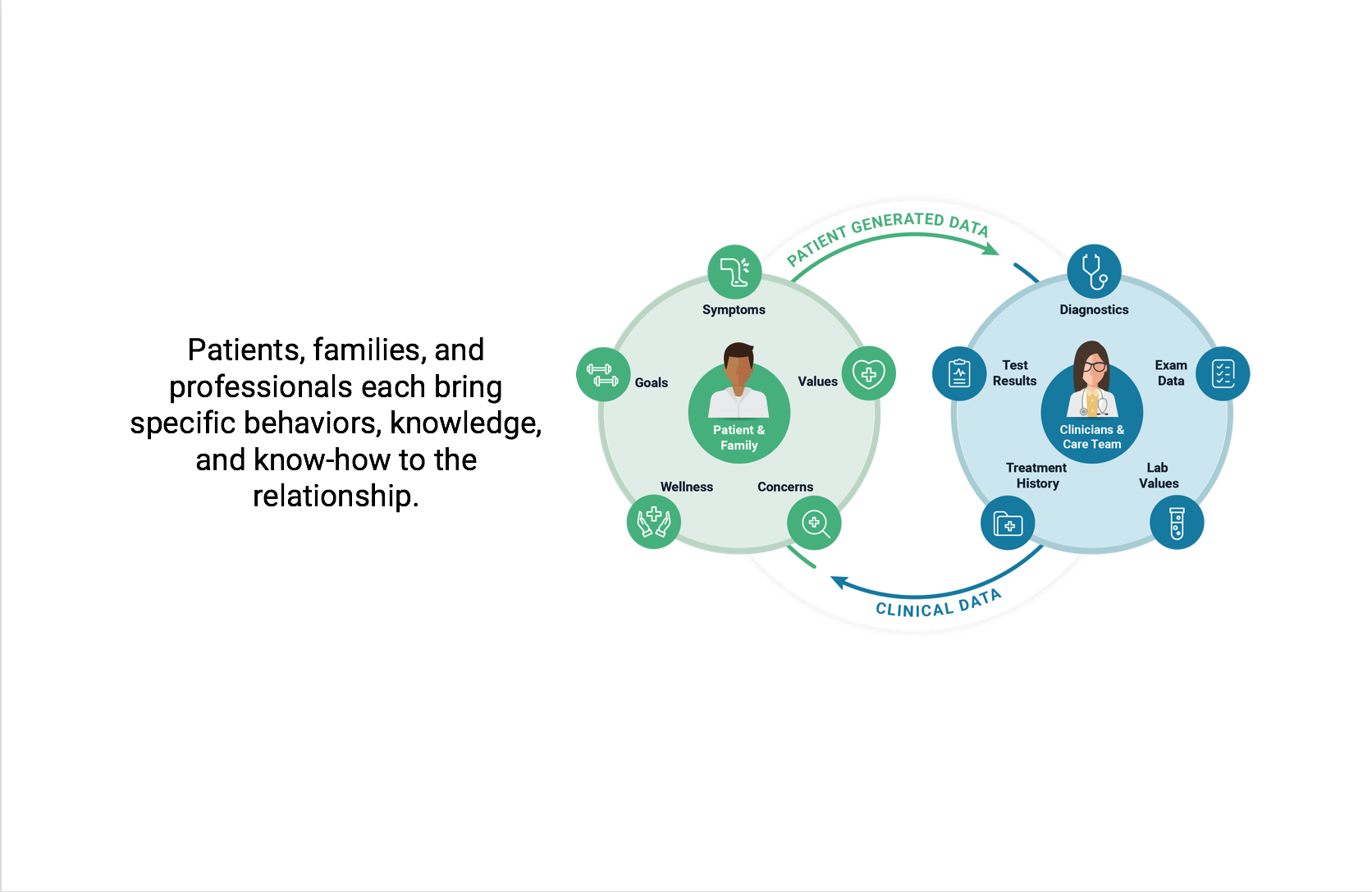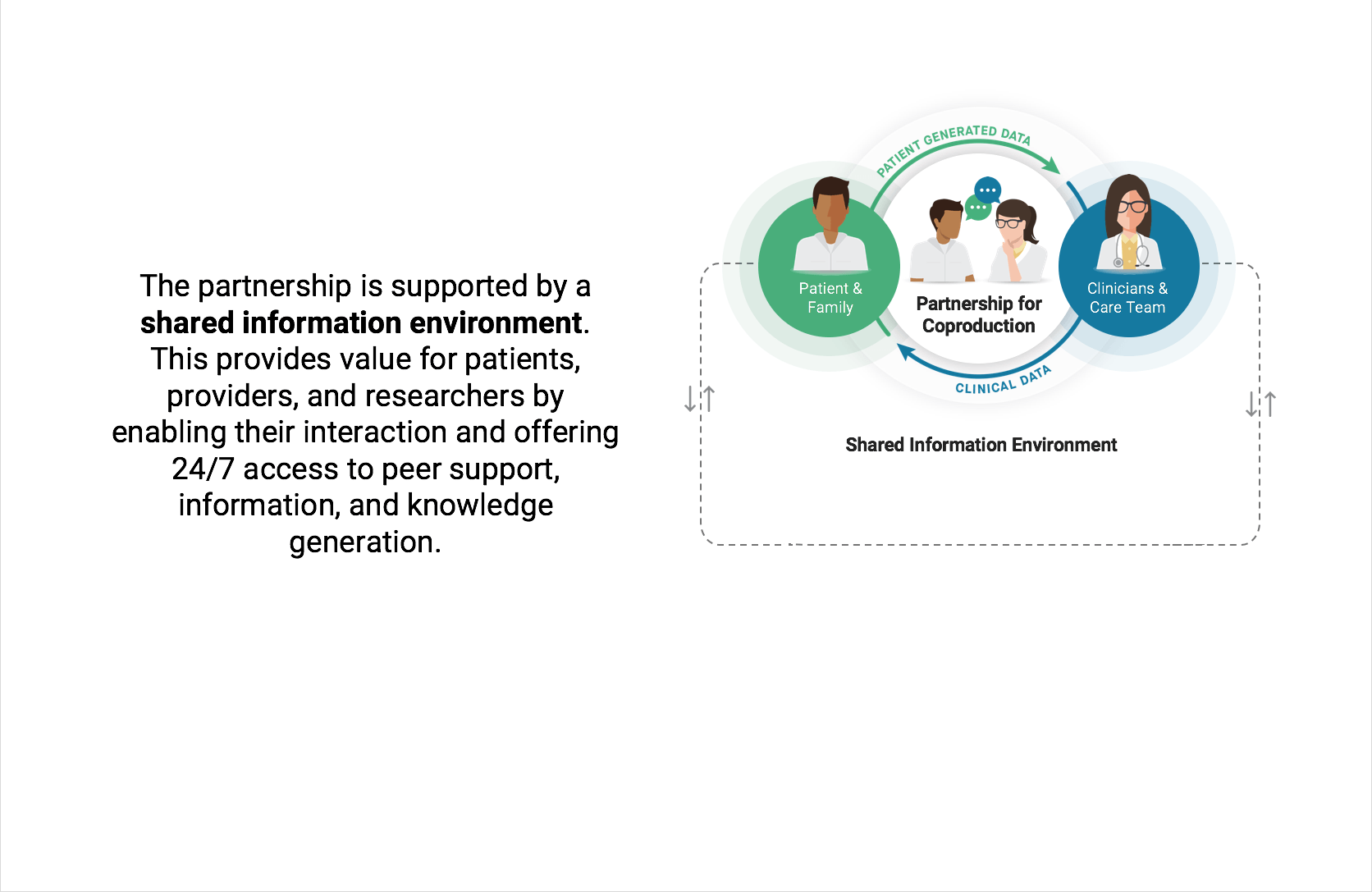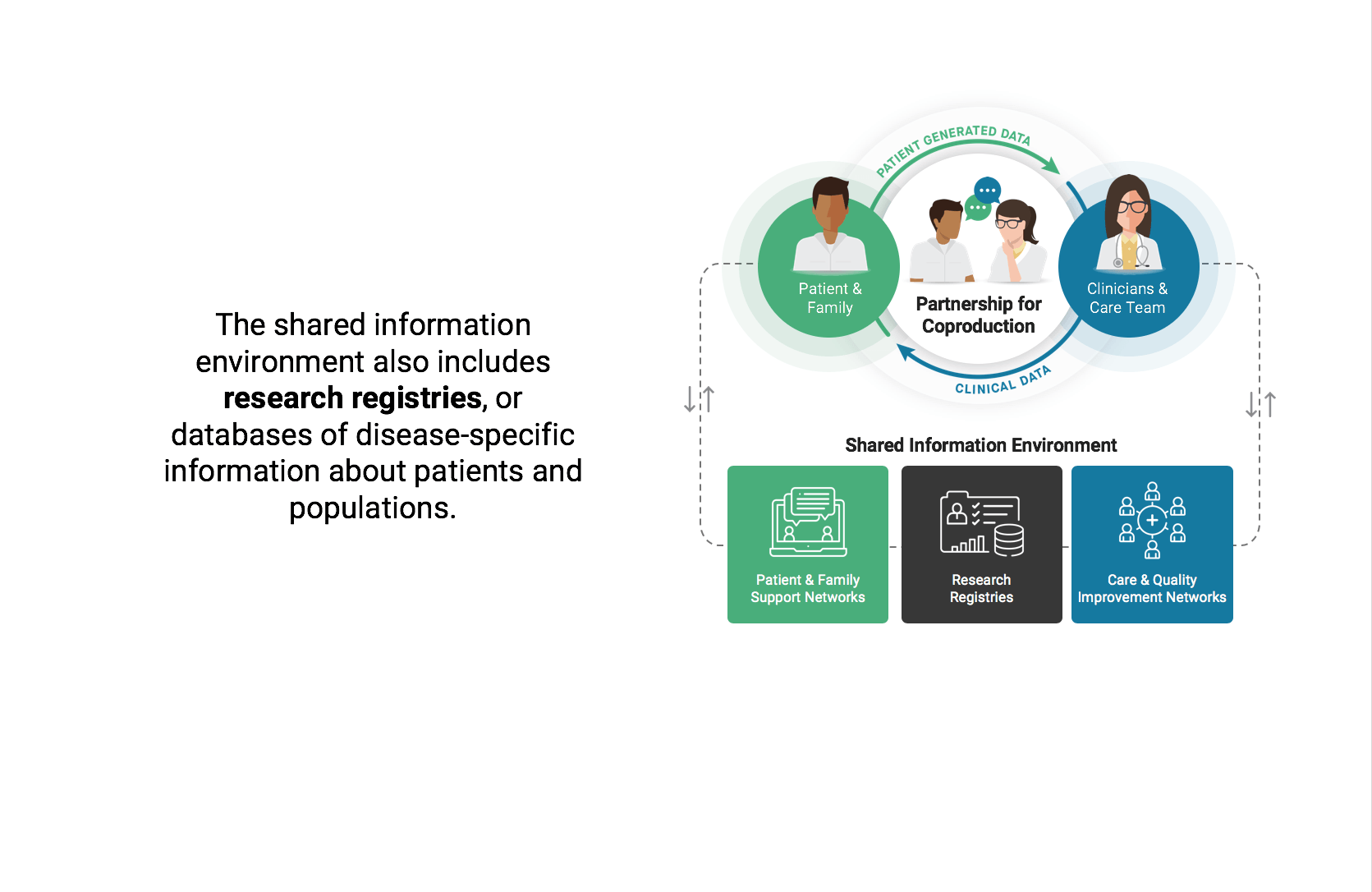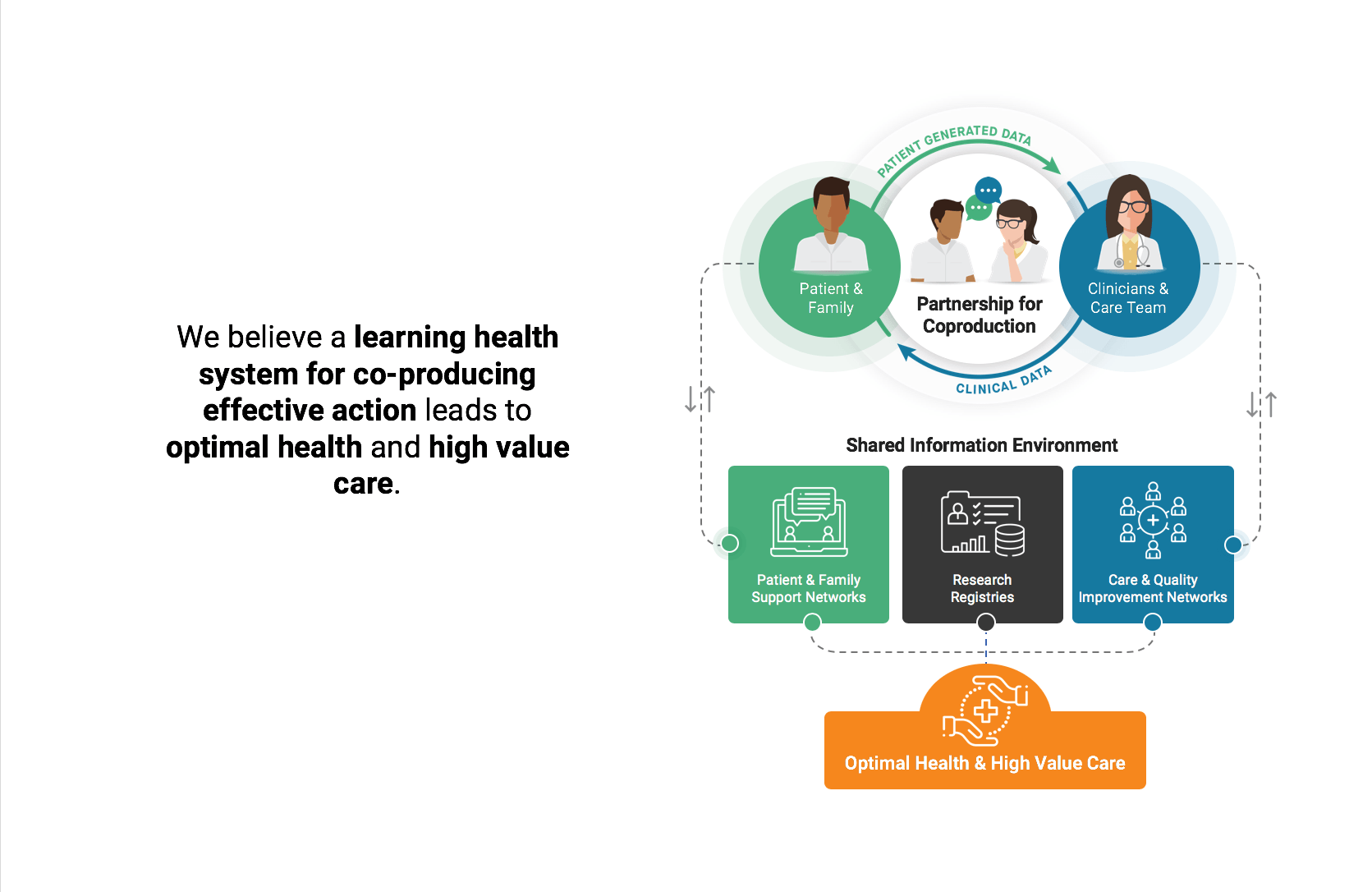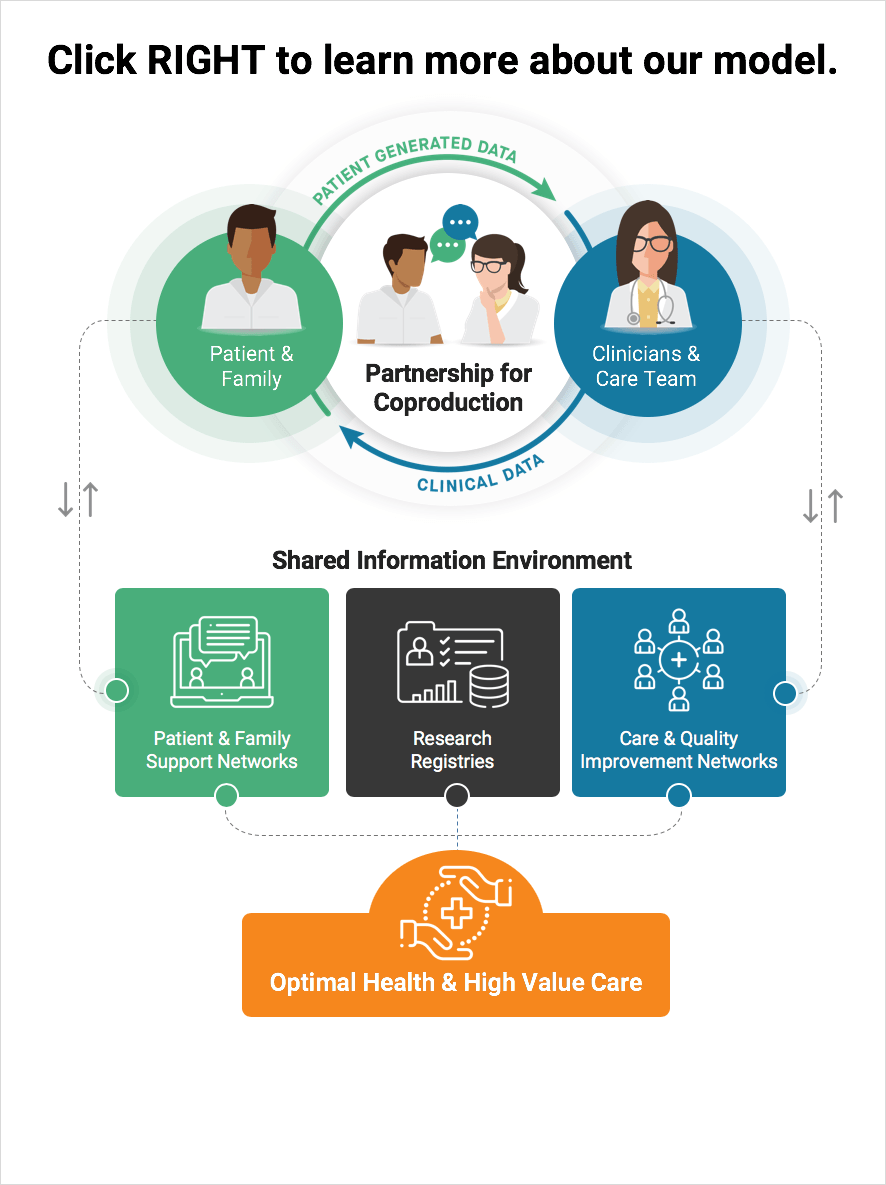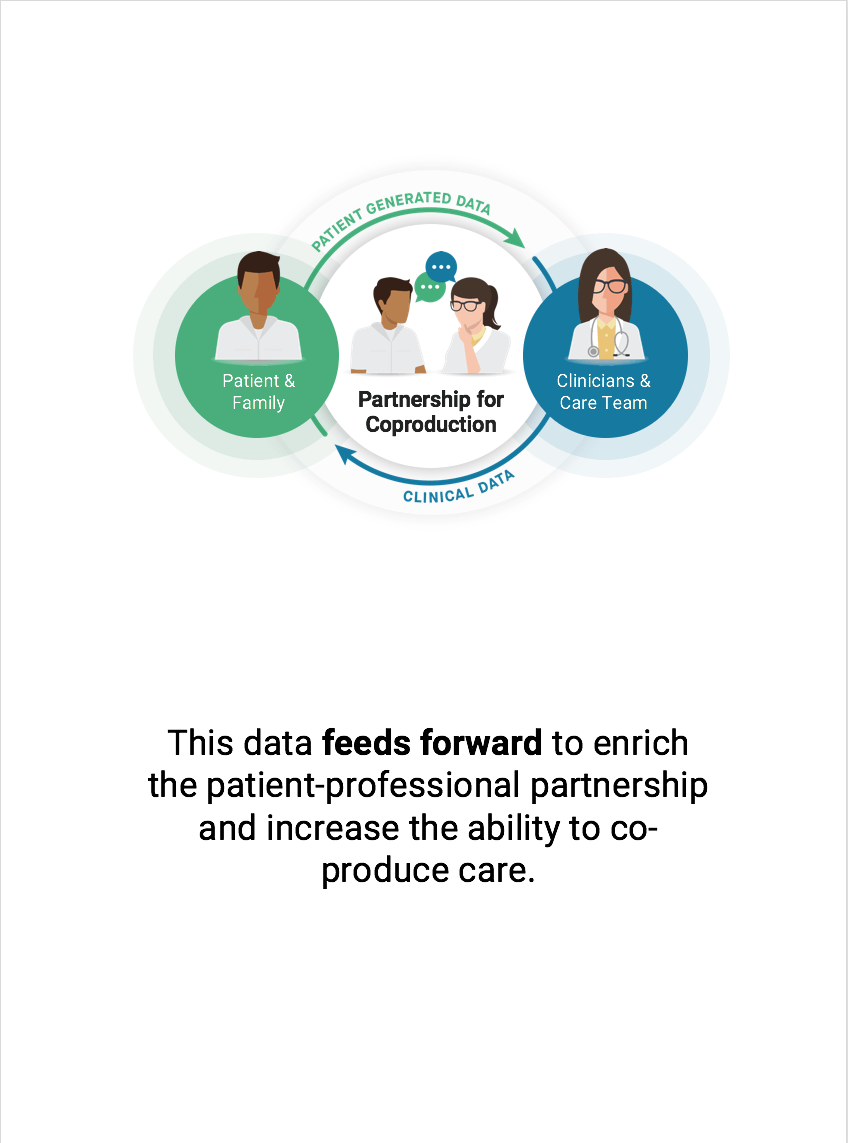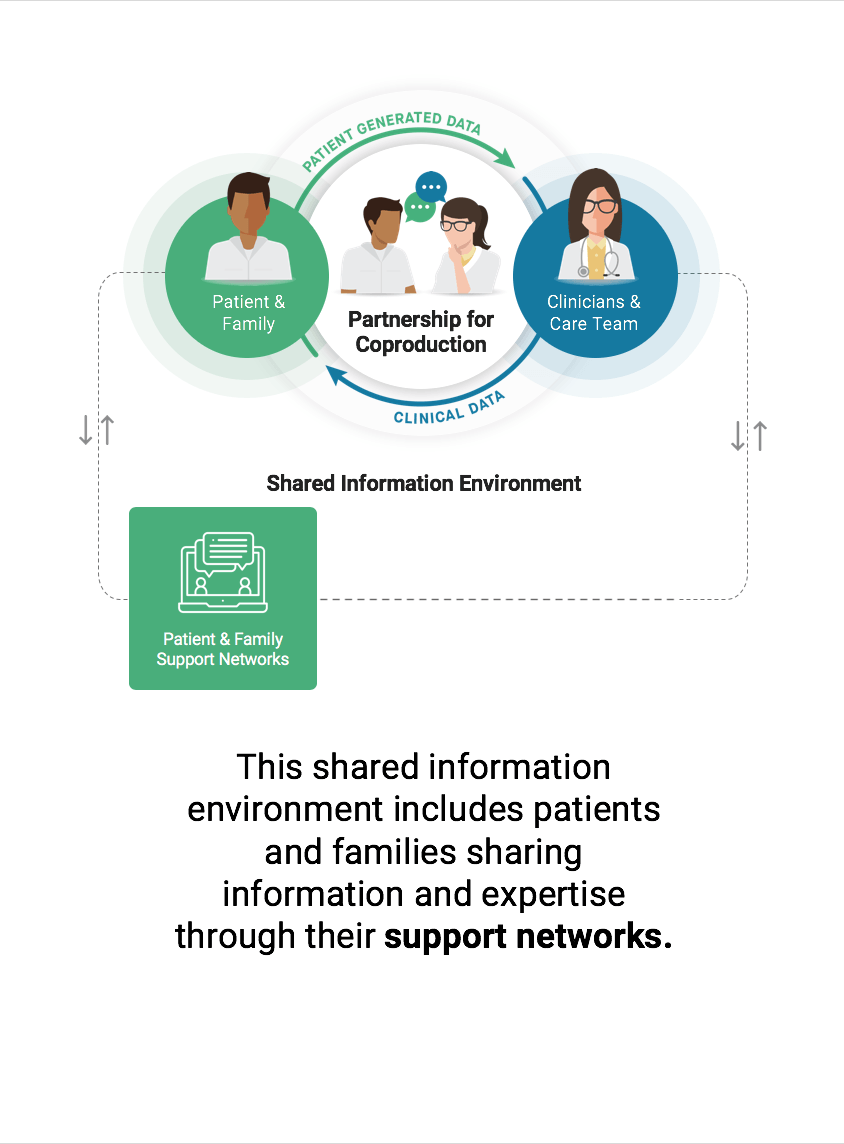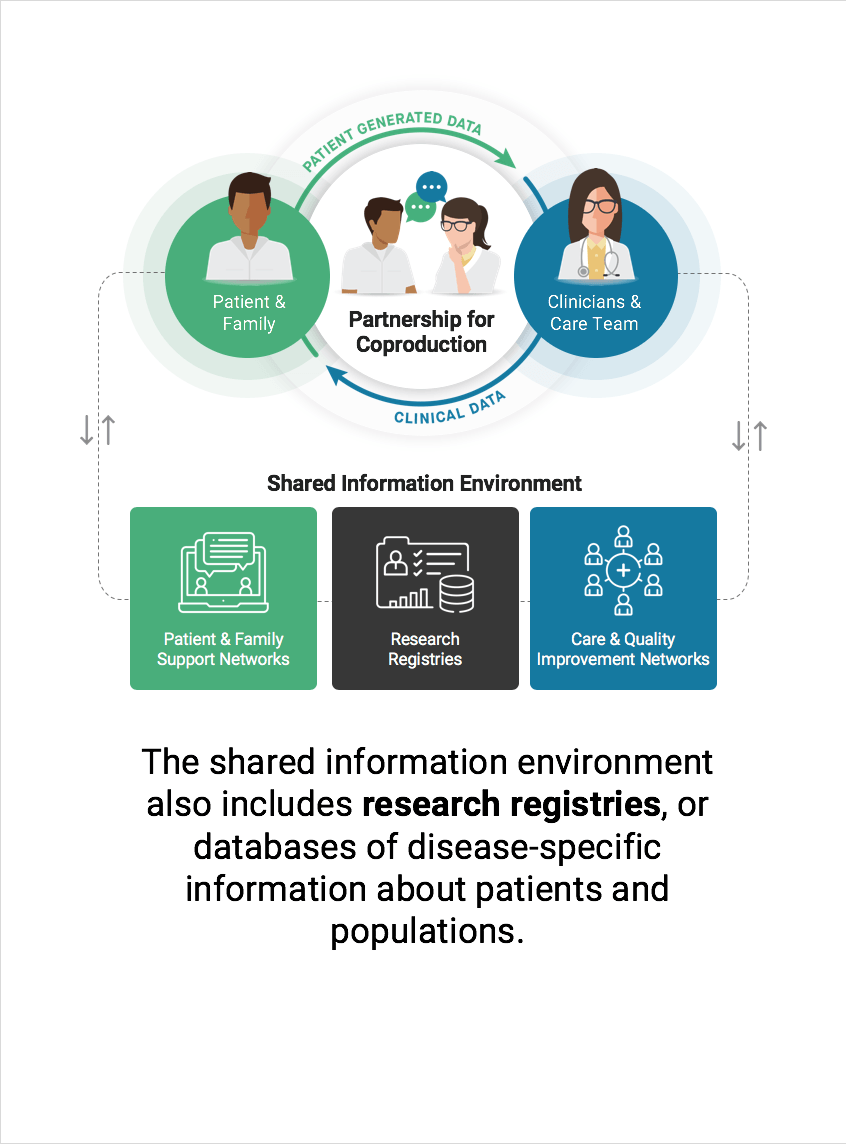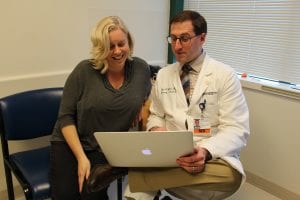OUR MODEL
At the model’s core is a partnership between the patient, their family or caregivers, and their clinicians. As partners, each contributes, or “feeds forward,” knowledge and expertise to inform care. The patient and family contribute their expertise in living with the disease, alongside their values, goals, and preferences. The clinician and care team contribute their knowledge of clinical evidence, prognosis, and treatment options.
This collective knowledge is used in many ways – to improve health and wellness, to improve the delivery of healthcare services, and to increase knowledge about the effectiveness of interventions.
MODEL COMPONENTS
The model has four key elements that can be integrated and coordinated within the learning health system framework. These elements are held together by the aims of: optimizing the health and well-being of patients and their families, continuously improving the value of healthcare services, and building scientific knowledge to measurably improve the experience of health, health and social care, and wellness.
- PATIENT-CLINICIAN PARTNERSHIP
- Patient and Family Support Network
- Quality Improvement Network
- Research REGISTRY
Patients, families, and their clinicians working together as true partners.
This partnership can be supported by a dashboard or visualization tool that displays the shared knowledge of patients and families — their health and wellness, symptoms, concerns, priorities, goals and values — alongside the knowledge of their clinicians — the patient’s clinical examination data, treatment history, test results and lab values. This dashboard allows patients, families, and clinicians to view and add information, and track how outcomes and experiences change over time in relationship to interventions.
 Connecting patients and families directly with one another to share information and expertise.
Connecting patients and families directly with one another to share information and expertise.
Networks that link similar patients and families together can foster sharing of information, care advice, social support, and learning. Such networks are often co-curated (text with tooltip) Patients, families, and caregivers organize, select, and present useful information and resources to support their peers going through similar experiences by patients, families, and professionals and provide information to support optimal care experiences, health, and high value care. Support networks use a variety of mediums, including newsletters, online discussion boards, and social network sites, and in-person groups.
 Clinical teams coming together to work toward the common goal of improving care.
Clinical teams coming together to work toward the common goal of improving care.
Clinical teams set goals to improve care at their clinic and then collect, share, and report on their progress toward key outcomes. This provides an opportunity for clinical practices to learn from one another, test changes, and observe the impact of those changes on outcomes and value. Data can be used to show which practices have the best outcomes, and to create population management reports that help identify high-risk patients that may benefit from special attention.
 A group of researchers using a common registry or database for the large-scale collection and analysis of patient experiences, outcomes, and treatments over time.
A group of researchers using a common registry or database for the large-scale collection and analysis of patient experiences, outcomes, and treatments over time.
By collecting standardized information on patients’ diagnoses, care processes, and outcomes, researchers can systematically compare and analyze information across multiple sites. This allows researchers to learn what treatments or interventions work best for which patients, and what conditions are necessary for an intervention to be effective.
1. PATIENT-CLINICIAN PARTNERSHIP
Patients, families, and their clinicians working together as true partners.
This partnership can be supported by a dashboard or visualization tool that displays the shared knowledge of patients and families — their health and wellness, symptoms, concerns, priorities, goals, and values — alongside the knowledge of their clinicians — the patient’s clinical examination data, treatment history, test results and lab values. This dashboard allows patients, families, and clinicians to view and add information, and track how outcomes and experiences change over time in relationship to interventions.
2. PATIENT AND FAMILY SUPPORT NETWORK

Connecting patients and families directly with one another to share information and expertise.
Networks that link patients and families together can foster sharing of information, care advice, social support, and learning among patients living with similar conditions and their families. Such networks are often co-curated by patients, families, and professionals and provide information to support optimal care experiences, health, and high value care. Support networks use a variety of mediums including newsletters, online discussion boards, social network sites, and in-person groups.
3. QUALITY IMPROVEMENT NETWORK
Clinical teams coming together to work toward the common goal of improving care.
Clinical teams set goals to improve care at their clinic and then collect, share, and report on their progress toward key outcomes. This provides an opportunity for clinical practices to learn from one another, test changes, and observe the impact of those changes on outcomes and value.
4. RESEARCH REGISTRY
A group of researchers using a common registry or database for the large-scale collection and analysis of patient experiences, outcomes, and treatments over time.
By collecting standardized information on patients’ diagnoses, care processes, and outcomes, researchers can systematically compare and analyze information across multiple sites. This allows researchers to learn what treatments or interventions work best for which patients, and what conditions are necessary for an intervention to be effective.
The Swedish Rheumatology Quality Register is a foundational example of this model in action. Click here to access videos on how it works.



